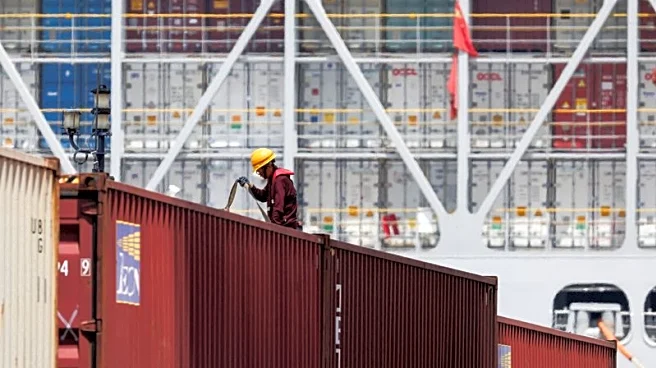Rapid Read • 7 min read
The Bureau of Labor Statistics released a consumer price index report indicating that food prices remained unchanged from June to July but were 2.9% higher than a year ago. This increase surpasses the Federal Reserve's target inflation rate of 2%. Despite stable overall food prices last month, Americans are experiencing higher costs for tariff-sensitive staples such as coffee, sugar, and bananas. These price hikes are attributed to various factors, including droughts in the Great Plains affecting feed prices and cattle herds, heat and drought in Brazil and Vietnam reducing coffee harvests, and avian flu impacting egg-laying flocks in the U.S. Additionally, poor sugar harvests in India and Thailand have tightened supplies, contributing to increased candy and sweets prices.
AD
The rising food costs have significant implications for U.S. households, as food expenses are among the most volatile parts of household budgets. These fluctuations can lead to financial stress, with over half of Americans citing grocery prices as a major concern. The ongoing tariff issues could exacerbate these costs, affecting consumer spending and economic stability. The cumulative food price inflation since 2020 has seen a 26% increase, highlighting the persistent impact of global supply disruptions and environmental factors on the U.S. economy.
Potential new import taxes could further increase food costs, affecting consumer budgets and potentially leading to changes in purchasing behavior. Stakeholders, including policymakers and industry leaders, may need to address these challenges to mitigate the impact on consumers and stabilize the market.
AD
More Stories You Might Enjoy












